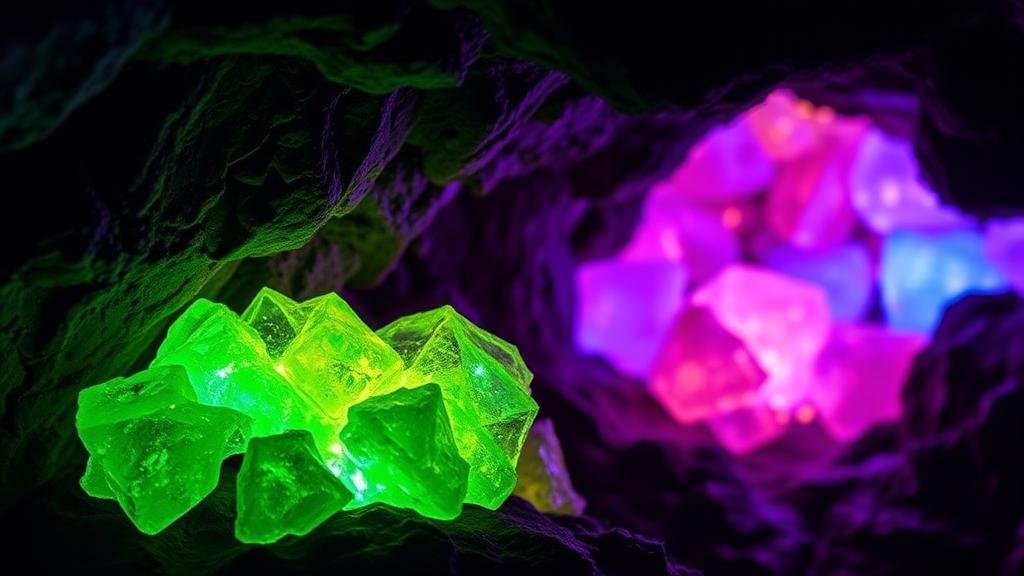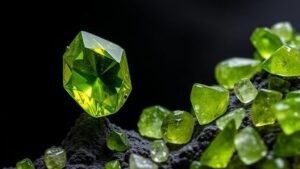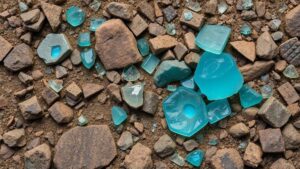The Glow of Hidden Gems: Fluorescent Minerals Found in Remote Caves
The Glow of Hidden Gems: Fluorescent Minerals Found in Remote Caves
For rockhounds and mineral collectors, the allure of fluorescent minerals cannot be overstated. Found mostly in remote caves and dark caverns, these vibrant gems offer a dazzling display of color and light when exposed to ultraviolet (UV) radiation. This article delves into the fascinating world of fluorescent minerals, their scientific properties, and how collectors can hunt for these hidden gems.
What are Fluorescent Minerals?
Fluorescent minerals are rocks that emit visible light when exposed to ultraviolet light. This remarkable phenomenon is the result of certain atoms within the minerals absorbing UV radiation and then re-emitting it as a lower energy light, which typically appears in striking colors such as green, pink, blue, or orange. The three main types of fluorescence are:
- Shortwave fluorescence: Emission from shortwave UV radiation (around 254 nm).
- Longwave fluorescence: Emission from longwave UV radiation (around 365 nm).
- Phosphorescence: A delayed re-emission of light after the UV source is removed, often lasting several seconds to minutes.
Notable Fluorescent Minerals
There are several fluorescent minerals that thrill collectors. Each has unique properties, colors, and ideal locations for finding them:
- Fluorite: Known for its rainbow of colors, this mineral can exhibit brilliant greens and purples under UV light. It often forms cubic crystals and can be found in numerous locations worldwide, including England and Mexico.
- Willemite: Exhibiting a bright green fluorescence under UV light, willemite is typically found in zinc ores and is primarily mined in Franklin, New Jersey. Its fluorescence intensity makes it a favorite among collectors.
- Calcite: This common mineral can fluoresce in various colors, including pink and orange, depending on impurities. While calcite is abundant worldwide, finding high-quality fluorescent specimens increases its collectability.
Scientific Data and Measurements
Fluorescent phenomena can be explained by the molecular structure of the minerals involved. effectiveness of fluorescence usually depends on factors such as:
- The type of impurities present, which can alter the way light is absorbed and re-emitted.
- The mineral’s crystal structure, which can influence the pathways for electron transitions. For example, in some fluorescent minerals, trace elements like manganese and uranium play crucial roles.
Research indicates that the intensity and wavelength of emitted light can be quantified, providing metrics for collectors. For example, fluorite may emit a green light at around 520 nm in wavelength during its fluorescence cycle.
Finding Fluorescent Minerals in Remote Caves
Identifying shades of glowing minerals requires not only an eye for color but also some practical tools and insights into cave exploration. Here are some tips for aspiring collectors:
- Tools: Equip yourself with a portable UV light (longwave and shortwave) and a reliable geological hammer, along with good-quality gloves for safety.
- Location Research: Prioritize regions known for unique geology, like the Appalachian Mountains or the caves of the Southwestern United States. Local geological surveys can provide valuable insights into potential sites.
- Safety First: Always inform someone about your plans and never hike alone in remote locations. Ensure to wear protective gear and bring hydration supplies.
Real-World Applications of Fluorescent Minerals
Beyond their aesthetic appeal for collectors, fluorescent minerals possess practical uses in various fields. For example:
- Mining: Fluorescent minerals can indicate the presence of valuable ores. For example, a significant find of fluorescent barite can lead miners to high-quality lead and zinc deposits.
- Education: Fluorescent minerals serve as excellent teaching tools in geology classes, helping students visualize concepts of light absorption and mineral composition.
- Art and Collectibles: Artists frequently incorporate these minerals in their artwork, adding an interactive or dynamic element due to the glowing properties.
Actionable Takeaways for Collectors
For rockhounds interested in starting–or expanding–their collection of fluorescent minerals, consider these key strategies:
- Join rockhounding clubs or online forums to connect with experienced collectors who can offer insights and location tips.
- Engage in local fossil and mineral shows to meet dealers specializing in fluorescent minerals, increasing your exposure to rare specimens.
- Experiment with different UV light sources as the quality and spectrum of the light source can significantly enhance the viewing experience of your minerals.
Conclusion
The quest for fluorescent minerals in remote caves is one fueled by adventure, curiosity, and the promise of discovery. Whether you are a jubilant beginner or a seasoned collector, the vibrant glow of these hidden gems can transform any excursion into a remarkable experience. With the right knowledge and tools, you can uncover the wonders of the underground, revealing nature’s hidden luminosity.



